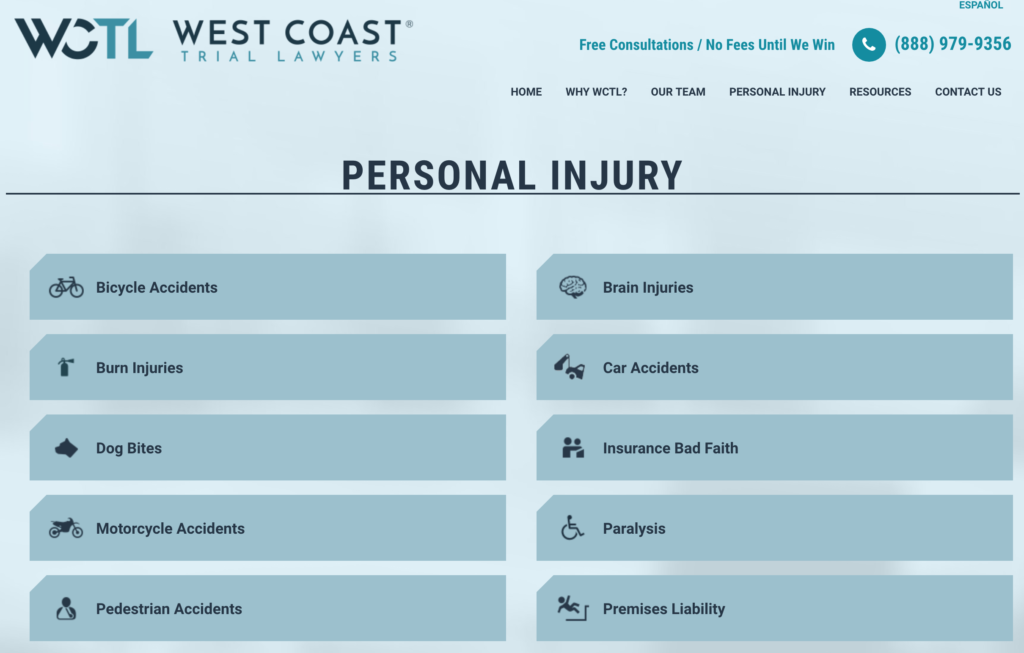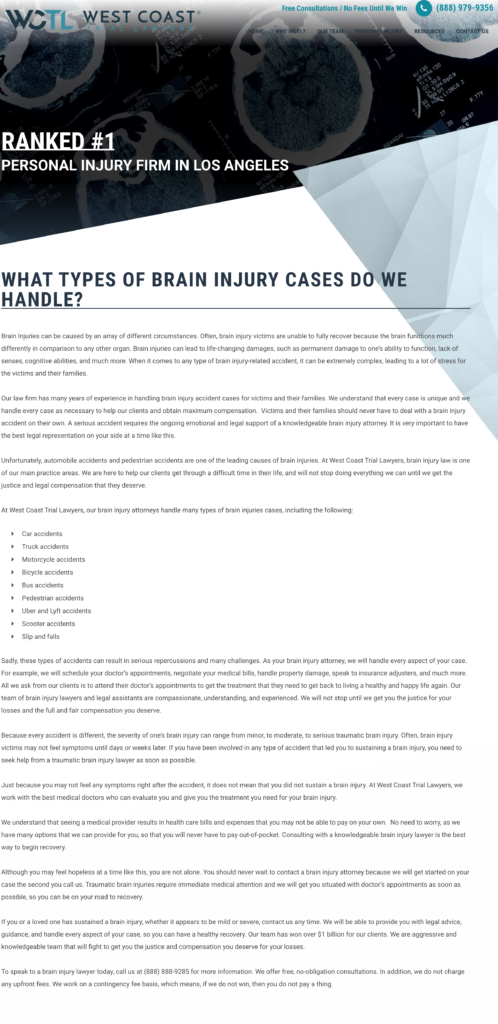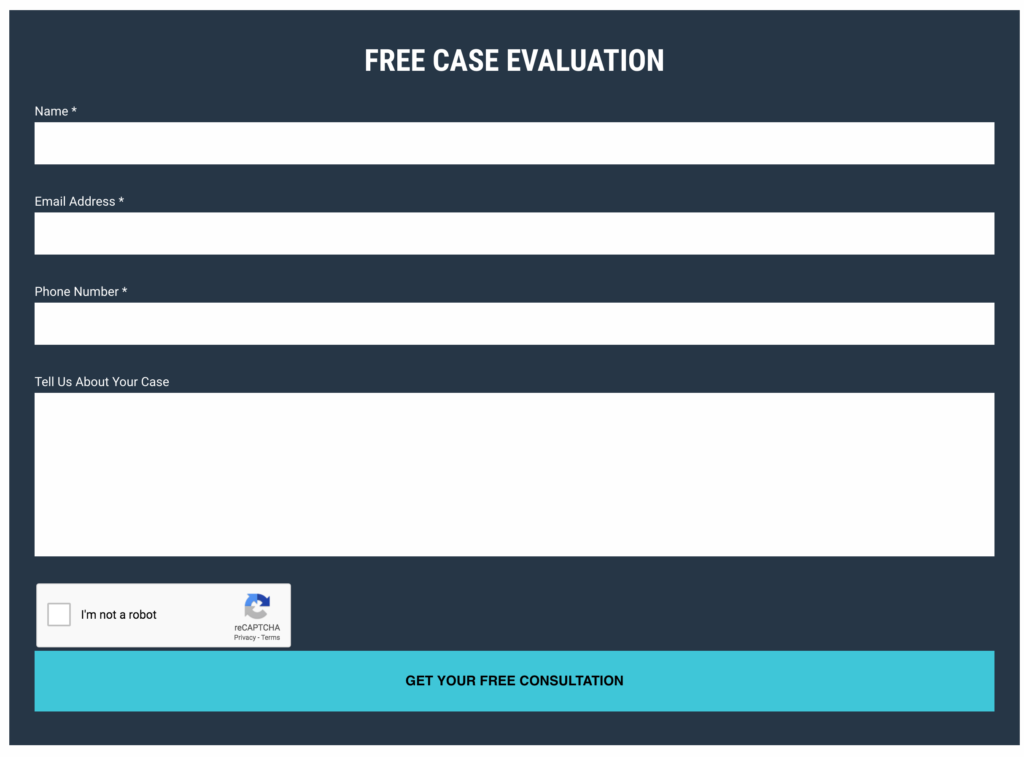Anatomy of the Perfect Practice Area Page
Create the Ideal Practice Area Pages for Your Firm
Practice area pages present a valuable opportunity to speak to your potential clients about what you do, why you do it, and how you can help them. A well-designed practice area page will help you to connect with potential clients in an engaging and informative manner.
There are a number of different ways to design your practice area pages, taking into consideration your target clients and your brand. You may opt for a creative and visually exciting design, or you may be more drawn to a clean and simple page, depending on who you are trying to reach. Regardless of the style you choose, your practice area pages should be well-organized, balanced, easy to navigate, and informative without being overwhelming. It is also important to use a consistent voice to connect with your particular audience, whether that means presenting your services in a formal and elevated manner for sophisticated corporate clients, or minimizing your use of legal jargon and adding to your presentation with case stories, videos, or client reviews for consumer-focused practices like personal injury or family law.
If you use your practice area pages effectively, you can convince a prospective client to pick up the phone and reach out for your services. You can see some of our top 50 practice area pages here.
Check out an example of one of our favorite practice area page designs – with a step by step breakdown of the elements and what makes it so successful overall. Though your design choices may differ depending on your brand, your “voice”, and your audience, this sample will give you an idea of how to create your quintessential practice area page design. The sample practice area page is from the site we created for West Coast Trial Lawyers.
1. Practice Area Main Page
Your primary goal for your practice area pages is to clearly communicate with prospective clients the answers to the following questions: what you do, how you do it, who you can help, and why they should hire you in their time of need. If you have a focused practice, such as only doing family law or personal injury, you can title your main practice area page accordingly to reflect your narrowed focus. From there, your pages should reflect the specific services you offer within that main practice area. You can add visual appeal through icons, imagery, and other effects, while keeping your specific practice area pages organized and easy to navigate.

2. Practice Area Header
In designing your practice area subpages, consider your ideal prospective client. What would catch their attention? What would keep their attention? Today’s consumers generally appreciate visually stimulating websites. Make use of an opportunity to integrate closely related imagery into your practice area header, and also include a headline, quote, or something else captivating and associated with your brand to further draw in the reader and establish your voice. West Coast Trial Lawyers, for example, are proudly ranked first in their region for personal injury. They consistently overlap that recognition with appropriate imagery for all of their practice area subpages, like the one below. This shows a potential client that the firm is an authority on the practice area, to entice them to continue reading about the services the firm offers.

3. Practice Area Content
Practice area pages are your opportunity to speak to a prospective client more specifically about what you do to show how you can help them. The content you include on practice area pages should reflect your knowledge and understanding of their needs. This is where you tell readers who you serve, how you can help, and why you are the right choice for their case.
For example, a practice area overview page about brain injuries successfully incorporates: the damages caused by brain injuries (who the firm services), the compensation available for injury victims (how the firm can help), and an explanation of the firm’s experience with brain injury lawsuits (why you should trust the firm with your case).

4. Practice Area Subpages
We recommend creating tabs or subpages within practice area pages to avoid overwhelming potential clients with too much information at once, and to avoid causing your page to appear cluttered.


5. Bonus Features
In addition to providing content, you can further establish your credibility and authority with a prospective client by including reviews, links to firm blogs and articles related to the practice area, and even videos.

6. Call to Action
Close with a call to action. It should state clearly what the next steps should be for your prospective client and make it as effortless as possible for them to take the next step toward becoming your client. You can do this in a number of ways, such as with easy click-throughs to call the firm directly or to leave contact information to receive a call back at the firm’s earliest convenience.

Overall
It’s important to make sure that your page works well as a whole. It needs to be easy to navigate, visually appealing, and consistent with your brand. Remember that you are writing for your ideal client, and tailor your practice area page design with this goal in mind. Take a look at the full practice area page used for this example, below:

The excerpts and breakdown of the practice area page above capture the key components that we recommend including in your practice area page. However, there is room for creativity in designing your page, and you may have a different vision depending who your ideal, target client base includes.
For more ideas on how you can tailor your practice area pages to best fit your firm and the services you provide, check out our review of some of our favorite practice area pages that we have created for clients.






